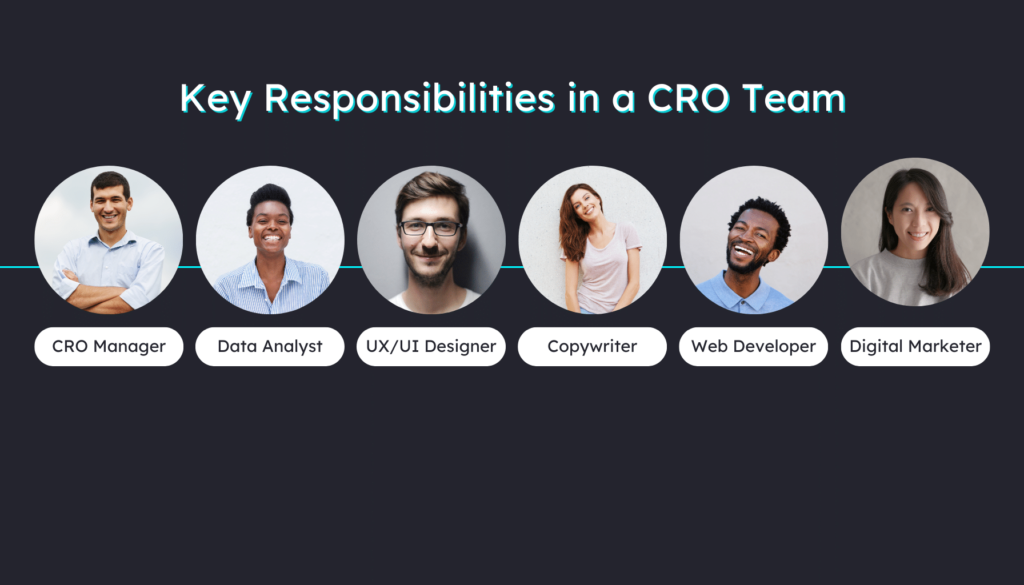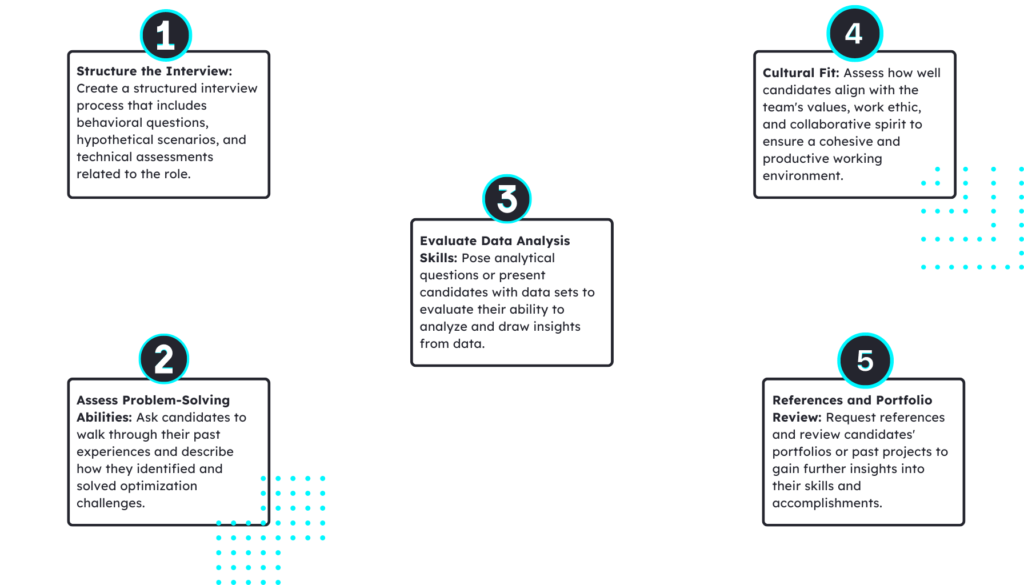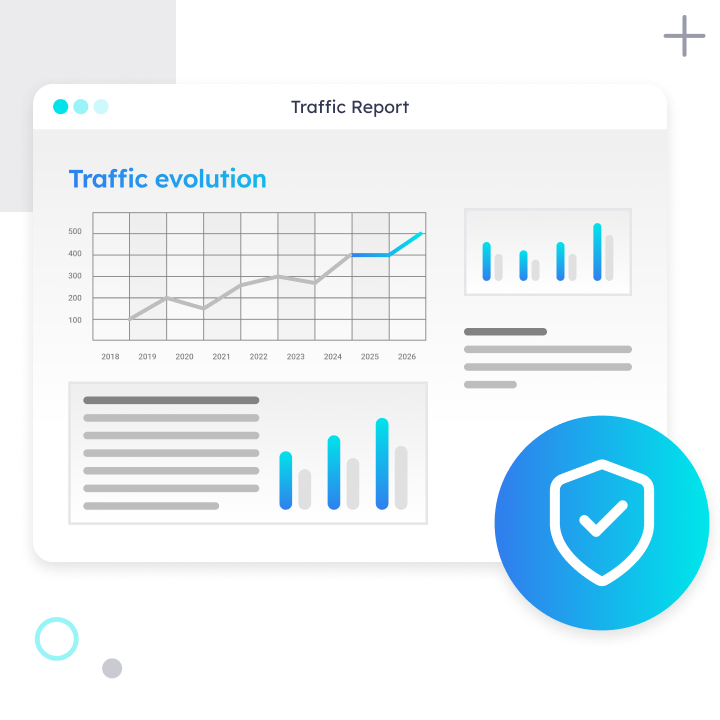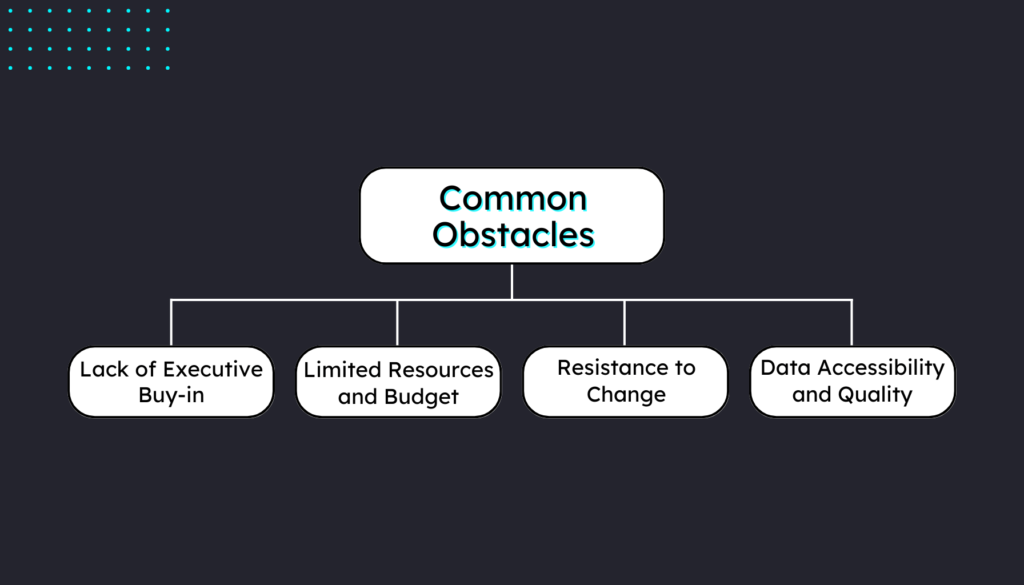
Conversion Rate Optimization (CRO) is a critical aspect of any successful online business. It involves optimizing your website, landing pages, and marketing campaigns to maximize the number of visitors who take desired actions, such as making a purchase, filling out a form, or subscribing to a newsletter. While CRO holds immense potential for driving significant business growth, it requires a dedicated and high-performing team to achieve outstanding results.
We’ll dive into the essential strategies and best practices for building a high-performing CRO team that consistently delivers exceptional results. We’ll explore the key roles, skills, and responsibilities required in a CRO team, along with practical steps to recruit, train, and develop top talent.
Understanding the Role of a CRO Team
Conversion Rate Optimization involves analyzing user behavior, conducting experiments, and implementing data-driven strategies to optimize various elements of a website or marketing campaign. The ultimate goal of CRO is to enhance conversion rates, whether that means increasing sales, generating leads, or achieving other predetermined objectives.
The scope of CRO encompasses a wide range of activities, including website design and layout optimization, landing page optimization, A/B testing, usability testing, copywriting improvements, and more. It requires a multidisciplinary approach that combines elements of design, psychology, data analysis, and marketing to deliver exceptional user experiences and drive desired actions.
Key Responsibilities and Skills Required in a CRO Team
A high-performing CRO team is composed of skilled individuals who bring diverse expertise to the table. Some of the key roles and responsibilities within a CRO team may include:
- CRO Manager: Oversees the entire CRO process, sets goals, manages resources, and ensures alignment with overall business objectives.
- Data Analyst: Collects and analyzes data, identifies trends and patterns, and provides actionable insights for optimization efforts.
- UX/UI Designer: Creates visually appealing and user-friendly interfaces, conducts user research, and designs optimized user experiences.
- Copywriter: Crafts persuasive and compelling copy that effectively communicates the value proposition and drives conversions.
- Web Developer: Implements technical optimizations, performs A/B tests, and ensures seamless functionality of the website.
- Digital Marketer: Executes marketing campaigns, manages landing pages, and collaborates with the team to align strategies.
In addition to specialized roles, a successful CRO team requires a set of core skills and attributes, including:
- Analytical Mindset: Ability to interpret data, draw conclusions, and make data-driven decisions.
- Creativity: Thinking outside the box to develop innovative testing ideas and solutions.
- Strong Communication: Effective collaboration, clear reporting, and presenting findings to stakeholders.
- Technical Proficiency: Understanding of web technologies, analytics tools, and testing platforms.
- Continuous Learning: Staying updated with the latest CRO trends, methodologies, and industry best practices.

Establishing a Culture of Experimentation and Data-Driven Decision-Making
Building a high-performing CRO team goes beyond assembling a group of talented individuals. It requires establishing a culture of experimentation and data-driven decision-making that permeates throughout the entire team. Here are key steps to foster such a culture:
- Embrace a Growth Mindset: Encourage team members to adopt a growth mindset, where challenges are viewed as opportunities for learning and growth. Emphasize that failures are stepping stones to success, and experimentation is essential for discovering effective optimization strategies.
- Cultivate Curiosity and Creativity: Encourage team members to be curious and open-minded. Foster an environment that inspires them to explore new ideas, challenge assumptions, and think creatively when it comes to optimizing conversion rates. Encourage brainstorming sessions and idea-sharing to promote a collaborative and innovative atmosphere.
- Implement a Test-and-Learn Approach: Develop a structured approach to experimentation by implementing a test-and-learn framework. Encourage team members to propose and conduct A/B tests, multivariate tests, user surveys, and qualitative research to gather insights and validate hypotheses. Create a process for documenting test results and sharing learnings across the team.
- Establish Data-Driven Decision-Making: Make data the foundation of decision-making within the CRO team. Encourage team members to rely on data analysis to identify trends, patterns, and opportunities for optimization. Provide access to robust analytics tools and ensure team members have the necessary skills to interpret and derive insights from data.
- Promote Cross-Functional Collaboration: Foster collaboration and knowledge sharing across different disciplines within the CRO team. Encourage designers, developers, marketers, and analysts to work together closely, leveraging their unique perspectives and expertise. Cross-functional collaboration enables a holistic approach to optimization, resulting in comprehensive solutions that address various aspects of the user experience.
- Celebrate Success and Learn from Failure: Acknowledge and celebrate successful experiments that lead to significant improvements in conversion rates. Recognize team members’ contributions and share success stories to inspire and motivate others. Similarly, view failures as valuable learning experiences and encourage open discussions about what can be learned from unsuccessful tests. Emphasize the importance of applying these learnings to future experiments.

Conducting Effective Interviews to Hire Top CRO Talent
During the recruiting process, focus on assessing candidates’ skills, experience, and cultural fit. Consider the following strategies:
- Structure the Interview: Create a structured interview process that includes behavioral questions, hypothetical scenarios, and technical assessments related to the role.
- Assess Problem-Solving Abilities: Ask candidates to walk through their past experiences and describe how they identified and solved optimization challenges.
- Evaluate Data Analysis Skills: Pose analytical questions or present candidates with data sets to evaluate their ability to analyze and draw insights from data.
- Cultural Fit: Assess how well candidates align with the team’s values, work ethic, and collaborative spirit to ensure a cohesive and productive working environment.
- References and Portfolio Review: Request references and review candidates’ portfolios or past projects to gain further insights into their skills and accomplishments.
Some questions you could include in your interview process, depending on the role, may include:
- Can you walk us through your experience with CRO and your understanding of its importance in driving business growth?
- Describe a challenging optimization project you’ve worked on in the past. How did you identify the areas for improvement, and what strategies did you implement to achieve positive results? Which KPIs guided you? Is there anything you would improve?
- CRO relies heavily on data analysis. How do you typically approach analyzing data to identify insights and make informed decisions? Which tools and platforms do you normally use? Can you provide an example of a situation where data analysis played a crucial role in achieving optimization success?
- How have you collaborated with other team members or stakeholders to implement successful optimization strategies? Share an example of a project where your collaboration skills made a significant impact.
- How would you describe your work style and how it aligns with a collaborative and results-oriented team environment?
- In CRO, experimentation is crucial. How do you approach developing and prioritizing experiments? Can you describe a situation where you proposed an innovative testing idea that led to significant improvements?
- Tell us about a time when you faced resistance or skepticism regarding a CRO initiative. How did you handle it, and what strategies did you use to gain buy-in from stakeholders?
- How do you stay updated with the latest CRO trends and industry best practices? Can you provide examples of how you applied new knowledge or emerging techniques to improve optimization efforts?
- Please share any relevant references or examples from your portfolio that showcase your experience and accomplishments in the field of CRO.
Free template: CRO audit checklist
Discover everything you need to start identifying drop-offs and increase conversions.

Empowering the Team with the Right Tools and Technology
Equipping your CRO team with the right tools and software is crucial for their success. Consider the following steps:
- Assess Needs and Objectives: Identify the specific needs and objectives of your CRO team. Determine the functionalities required, such as multivariate testing, smart analytics, and user feedback collection, among others.
- Research and Evaluate: Conduct thorough research to identify reputable CRO tools and software providers. Evaluate their features, user reviews, pricing models, and compatibility with your existing systems.
- Test and Trial: Consider conducting trials or demos of shortlisted tools to assess their usability, user interface, and the extent to which they meet your team’s requirements. Encourage feedback from team members during this process.
Increase +180%
leads
demos
sales
bookings
from your website with AI
Get more conversions from your existing website traffic delivering personalized experiences.

Once you’ve selected the appropriate CRO tools and software, it’s essential to provide your team with the necessary resources to excel in their roles. Consider the following aspects:
- Access to Data: Ensure team members have access to relevant data sources, such as analytics platforms, customer databases, and user research findings. Provide them with the tools and permissions required to gather insights and make data-driven decisions.
- Professional Development: Encourage continuous learning and professional development by providing resources such as industry publications, webinars, conferences, and online courses. Support team members in expanding their knowledge and staying up-to-date with CRO best practices.
- Collaboration and Communication Tools: Implement effective collaboration and communication tools, such as project management platforms, messaging apps, and file-sharing systems. These tools facilitate seamless teamwork, efficient communication, and knowledge sharing within the team.
- Budget and Support: Advocate for a sufficient budget allocation to ensure the team has access to the necessary resources, such as software licenses, subscriptions, and research materials. Support their requests for additional tools or resources that can enhance their productivity and effectiveness.
Establishing KPIs and Performance Measurement
Establishing clear and relevant key performance indicators (KPIs) is essential to measure the effectiveness of your CRO team’s efforts. Consider the following steps:
- Align with Business Objectives: Start by aligning your CRO KPIs with your overall business objectives. Identify how CRO contributes to the broader goals of the organization, such as revenue growth, customer acquisition, or customer retention.
- Focus on Conversion Metrics: Choose KPIs that directly reflect the impact of CRO efforts on conversions. These can include metrics like conversion rate, average order value, lead-to-customer conversion rate, or revenue per visitor. Select metrics that are relevant to your specific business model and objectives.
- Consider Engagement Metrics: In addition to conversion-focused metrics, consider including engagement metrics such as bounce rate, time on page, or click-through rate. These metrics provide insights into the quality of user experience and can help identify areas for optimization.
- Use SMART Framework: Ensure your KPIs are Specific, Measurable, Attainable, Relevant, and Time-bound. This framework helps create meaningful and actionable KPIs that can guide your team’s efforts effectively.
To gauge the effectiveness of your CRO team’s efforts, regular tracking and evaluation of performance against KPIs are crucial. Consider the following steps:
- Implement Tracking Mechanisms: Set up robust analytics and reporting systems to track relevant metrics and KPIs in real time. Ensure data is collected consistently and accurately to provide reliable insights.
- Regular Performance Reviews: Conduct regular performance reviews to evaluate team members’ progress toward targets, identify areas for improvement, and provide constructive feedback. These reviews can be conducted monthly, quarterly, or on a timeline that aligns with your business needs.
- Celebrate Milestones and Successes: Acknowledge and celebrate team achievements when milestones or targets are met or exceeded. Recognition boosts morale, encourages a sense of accomplishment, and motivates team members to continue performing at their best.
- Identify Improvement Opportunities: In cases where performance falls short of expectations, use these moments as opportunities for learning and improvement. Analyze the factors contributing to underperformance and collaborate with the team to develop strategies for improvement.

Identifying Common Obstacles and Roadblocks in Building a High-Performing CRO Team
- Lack of Executive Buy-in: Overcoming resistance or lack of support from upper management can hinder the success of your CRO initiatives. Educate key stakeholders about the value of CRO, its impact on business growth, and the need for resources and support.
- Limited Resources and Budget: Insufficient resources, including budget constraints, can restrict the implementation of necessary tools, technology, and training. Clearly articulate the potential return on investment (ROI) of CRO activities to secure the required resources.
- Resistance to Change: Some team members or departments may resist adopting CRO practices due to unfamiliarity or fear of change. Educate and communicate the benefits of CRO, provide training and support, and emphasize how it aligns with overall business objectives.
- Data Accessibility and Quality: Inadequate access to data or poor data quality can hinder effective decision-making. Ensure the team has access to reliable and relevant data sources, and establish data governance practices to maintain data integrity.
How to Overcome These Challenges and Foster Resilience
- Build a Cross-Functional Support Network: Foster relationships and establish open lines of communication with key stakeholders and departments. Collaborate with them to address challenges and leverage their support to overcome obstacles.
- Develop Change Management Strategies: Implement change management strategies to overcome resistance and ensure a smooth transition towards a data-driven and experimentation-focused culture. Provide clear communication, training, and ongoing support to help team members embrace and adapt to change.
- Prioritize and Iterate: Break down larger objectives into smaller, manageable goals. Prioritize initiatives based on their potential impact and feasibility. Iterate and learn from each experiment, optimizing your approach over time.
- Foster a Learning Culture: Encourage a growth mindset within the team, emphasizing that failures are learning opportunities. Celebrate experimentation, share learnings, and encourage continuous improvement to build resilience and adaptability.
Conclusion
Building a high-performing CRO team is a journey that requires careful planning, strategic execution, and a commitment to continuous improvement. Throughout this guide, we have explored key strategies and best practices to help you assemble a team capable of delivering outstanding results in conversion rate optimization. From understanding the role of a CRO team and fostering a culture of experimentation and data-driven decision-making to recruiting top talent, empowering them with the right tools, and establishing KPIs, we have covered essential aspects of building a successful CRO team.
By implementing these strategies, you can create an environment that fosters innovation, collaboration, and a relentless pursuit of optimization excellence. Recognizing and rewarding individual and team achievements, providing opportunities for career growth and professional development, and overcoming challenges with resilience will further fuel the success of your CRO team.





